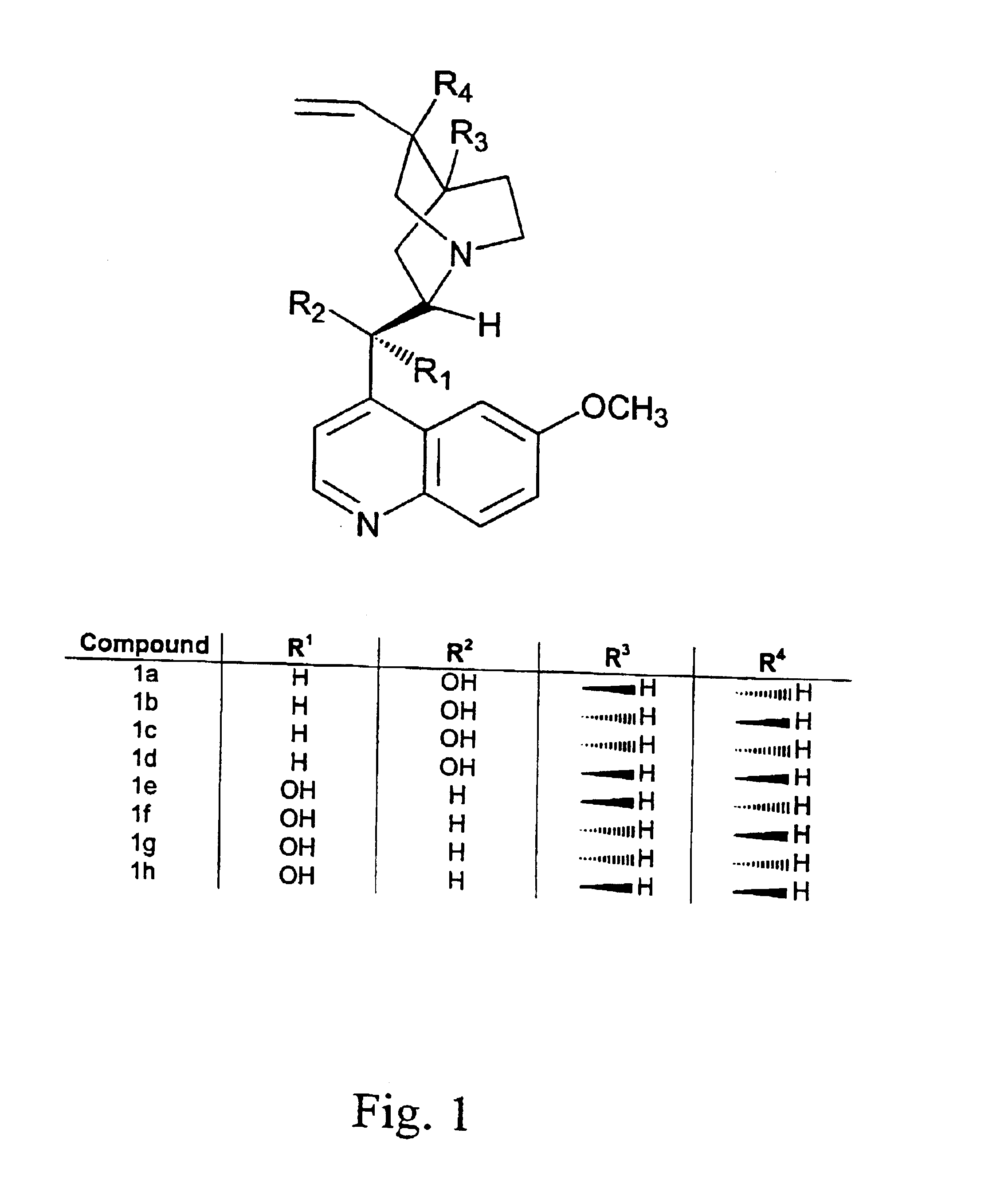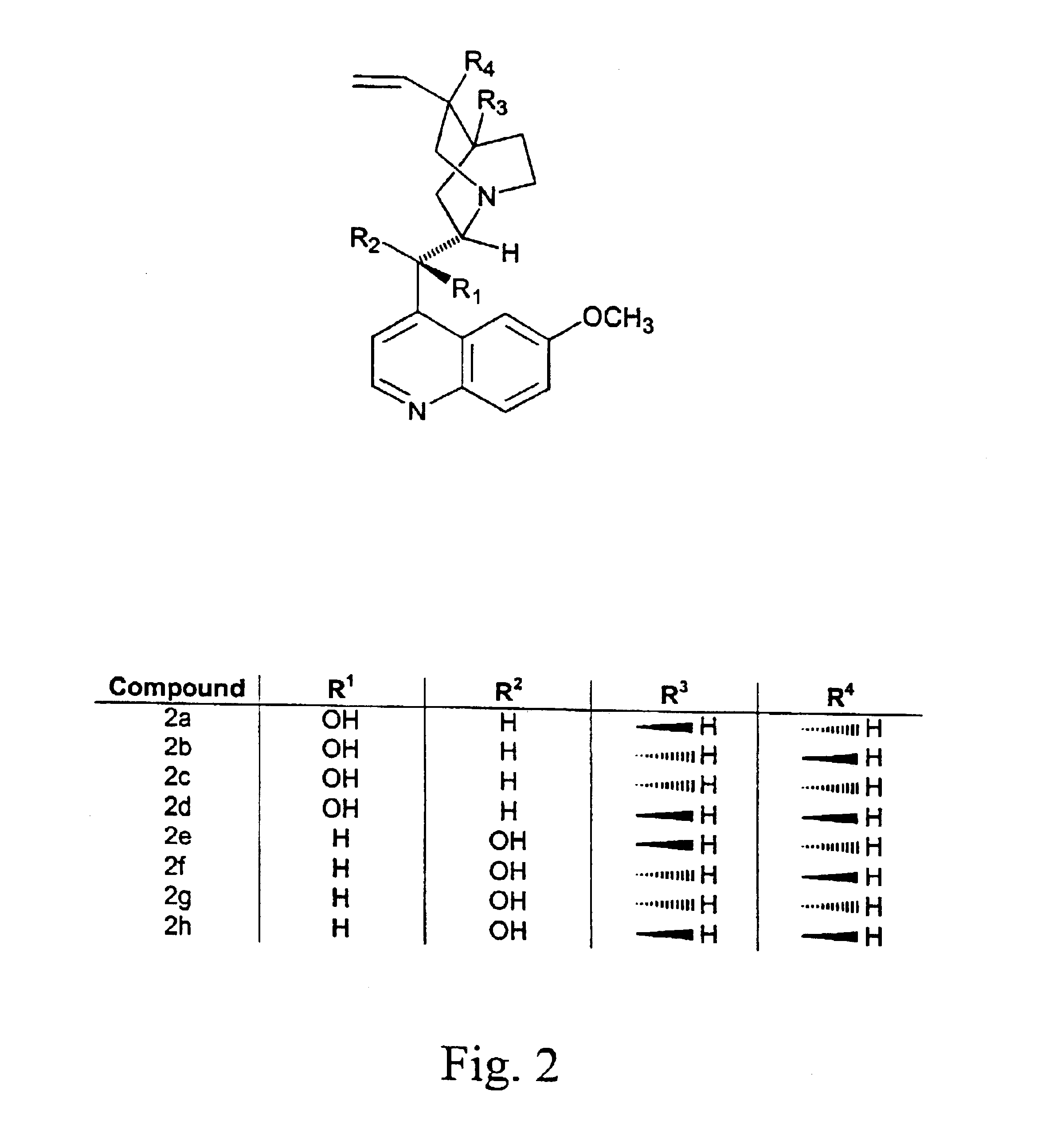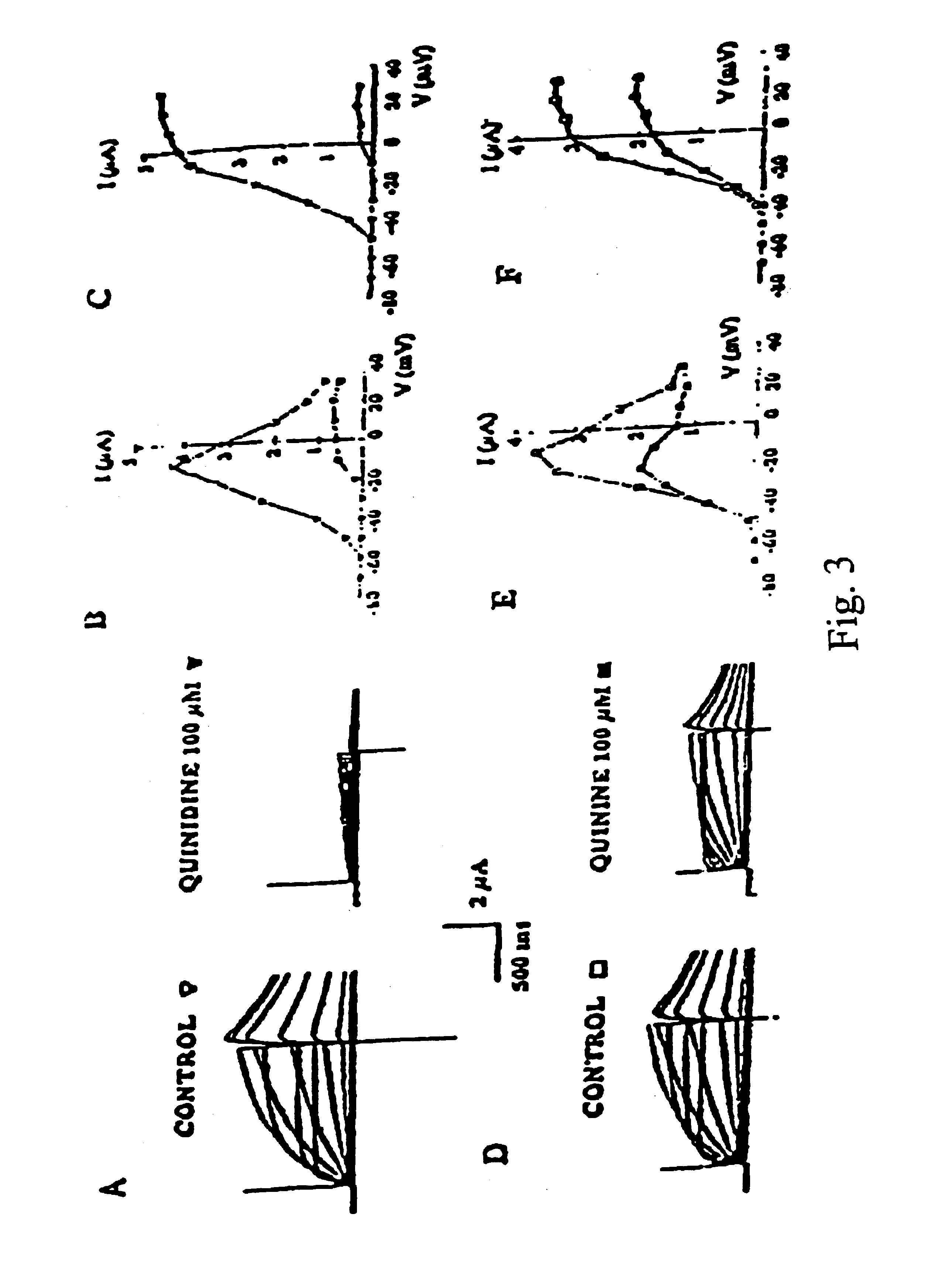Optically active isomers of quinine and quinidine and their respective biological action
a quinidine and quinidine technology, applied in the field of identifying the biological activity, can solve the problems of limited clinical utility of quinidine, insufficient understanding of the prolongation of the qt interval due to apd (action potential duration), so as to improve the effect of cardiac arrhythmia treatment, increase luminal secretion, and increase the molecular weigh
- Summary
- Abstract
- Description
- Claims
- Application Information
AI Technical Summary
Problems solved by technology
Method used
Image
Examples
example 1
Purification of Quinidine. Quinidine is known to contain up to 20% dihydroquinidine as an impurity. In order to obtain pure quinidine (>99%) and avoid interference due to this impurity, commercial quinidine (containing dihydroquinidine) is subjected to purification using HPLC. The HPLC procedure utilizes a C18 μ-Bondapak column operated isocratically with 0.05 M sodium (or potassium) phosphate buffer (pH 3.0) and acetonitrite (73:27, v / v) at a constant flow-rate of 1 ml / min. The UV variable wavelength detector is set at 237 nm and the liquid chromatograph employed is a Spectral Physics Apparatus. Portions of the eluent containing the quinidine (as indicated in the chromatogram) are collected, concentrated and later subjected to HPLC analysis. Following separation, this analysis indicates the quinidine peak to be greater than 99.9% pure.
Chromatographic Isolation of Quinine and Quinidine Isomers. Chiral separation is performed using a Spectra-Physics HPLC instrument and UV variable wa...
example 2
Assay for Isomers of Quinine and Quinidine. The following methods are available and routinely used for assaying quinine and quinidine in biological fluids: 1) high-pressure liquid chromatography using normal or reverse phase columns (C8 or C18) and isocratic or gradient solvent systems and either fluorescence or UV detector (Carignan et al., 1995; Ahokas et al., 1980); 2) solid-phase extraction following by HPLC; 3) enzyme multiplied immunoassay (EMIT); 4) radioimmunoassay followed by HPLC; and 5) fluorescence polarization immunoassay (FPIA) with HPLC.
Examples of Type 1 use a chiral stationary phase (e.g., Resolvosil) in order to achieve enantiomeric separation of the isomeric compounds of quinine and quinidine. The liquid chromatograph (Spectra Physics) is equipped with a Resolvosil column protected by a Suplex pkb-100 guard column 20×4.6 mm ID 5 μm particle size and UV variable wavelength detector set at 237 nm. The mobile phase consists of a mixture of aqueous H2SO4 solution (0.0...
example 3
Na Channel expression and characterization. The SCN5A gene encoding the human cardiac sodium channel is derived from the hH1A expression plasmid (Gellens et al., Proc. Natl. Acad. Sci. 1992, 89, 554-558; Hartmann et al., Circ. Res. 1994, 75, 114-122). The full-length cDNA is cloned into the pGEM3 plasmid vector (Promega). The DNA construct is linearized by digestion with HindIII for runoff transcription. In vitro transcription with T7 RNA polymerase is performed using the Message Machine kit (Ambion). The amount of cRNA synthesized is quantified by the incorporation of trace amounts of [32P]UTP (phospho uracil three phosphate) in the synthesis mixture. The final cRNA product is then suspended in 0.1 mM KCI at 200 μg / μl and stored at −80° C. The cRNA is diluted to a concentration of about 10 pg / nl before oocyte injection. Expression of SCN5A currents in Xenopus oocytes is obtained after cRNA injection of the corresponding genes.
For SCN5A currents the following protocol is used: a) I-...
PUM
| Property | Measurement | Unit |
|---|---|---|
| pH | aaaaa | aaaaa |
| UV variable wavelength detector | aaaaa | aaaaa |
| UV variable wavelength detector | aaaaa | aaaaa |
Abstract
Description
Claims
Application Information
 Login to View More
Login to View More - R&D
- Intellectual Property
- Life Sciences
- Materials
- Tech Scout
- Unparalleled Data Quality
- Higher Quality Content
- 60% Fewer Hallucinations
Browse by: Latest US Patents, China's latest patents, Technical Efficacy Thesaurus, Application Domain, Technology Topic, Popular Technical Reports.
© 2025 PatSnap. All rights reserved.Legal|Privacy policy|Modern Slavery Act Transparency Statement|Sitemap|About US| Contact US: help@patsnap.com



